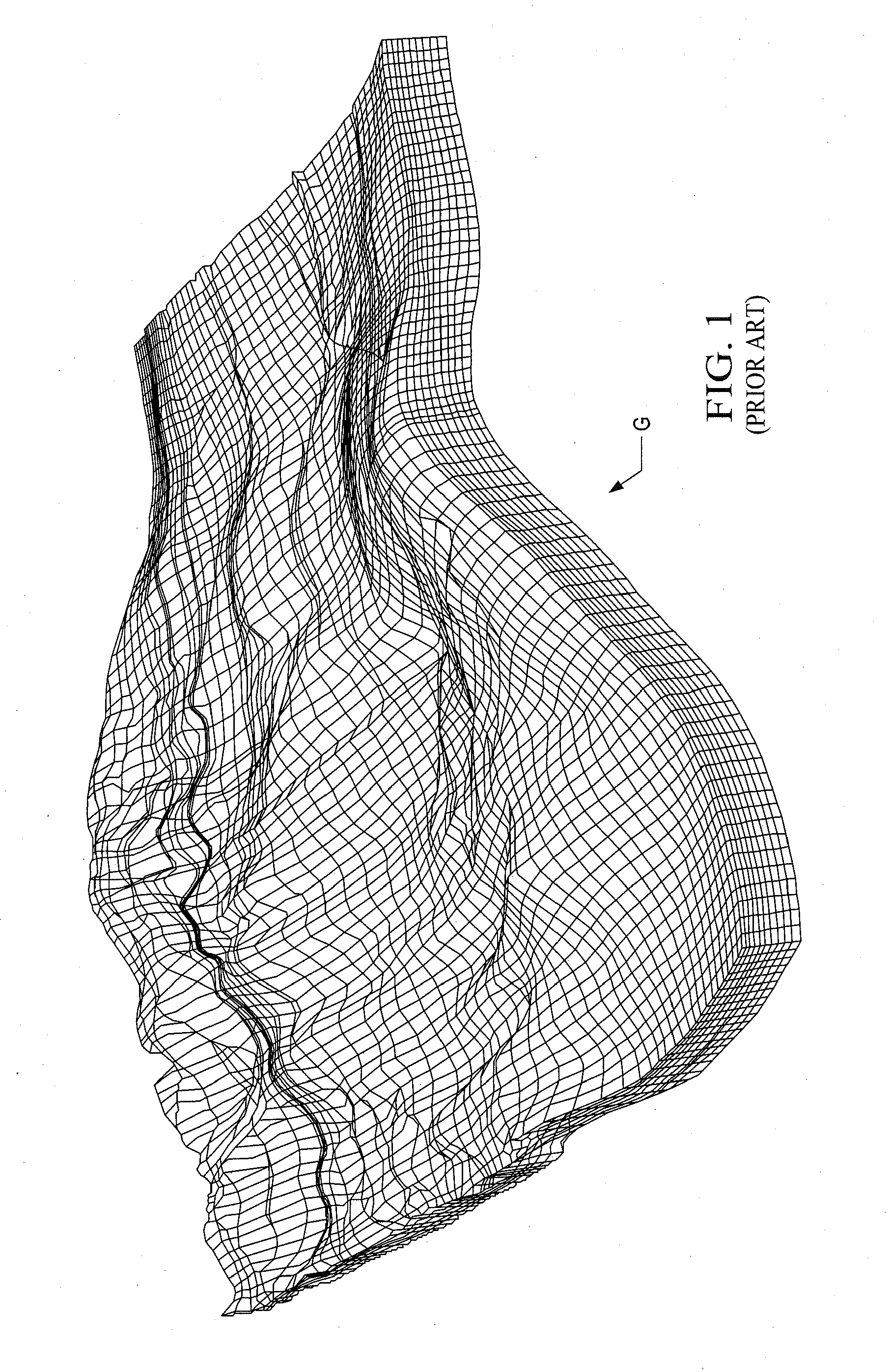Giga-cell linear solver method and apparatus for massive parallel reservoir simulation
a parallel reservoir and solver technology, applied in the field of computerized simulation, can solve the problems of large spare linear systems involving general unstructured matrices, the requirement of unstructured cell connectivity, and the inability of gmg multi-level methods to solve large spare linear systems
- Summary
- Abstract
- Description
- Claims
- Application Information
AI Technical Summary
Benefits of technology
Problems solved by technology
Method used
Image
Examples
Embodiment Construction
[0039]With the present invention, a multi-stage preconditioning in massive parallel reservoir simulation which is highly scalable is provided. The governing nonlinear partial differential equations solved by reservoir simulation with the present invention are the discrete mass, momentum, and energy balances written for the transient multi-phase multi-component fluid flow for interconnected finite volumes which are known as grid cells. For what are known as giant reservoirs, the number of grid cells can be several millions to over a billion. In addition, a simulation model can contain several reservoirs. The reservoirs may also be connected hydraulically via communicating aquifers and / or subterranean fracture systems in surrounding geologic formation and strata. The reservoirs may also be connected via multi-lateral wells drilled into the different formation for comingling production or injection processes.
[0040]While the processing methodology is competitive, robust, and offers supe...
PUM
 Login to View More
Login to View More Abstract
Description
Claims
Application Information
 Login to View More
Login to View More - R&D
- Intellectual Property
- Life Sciences
- Materials
- Tech Scout
- Unparalleled Data Quality
- Higher Quality Content
- 60% Fewer Hallucinations
Browse by: Latest US Patents, China's latest patents, Technical Efficacy Thesaurus, Application Domain, Technology Topic, Popular Technical Reports.
© 2025 PatSnap. All rights reserved.Legal|Privacy policy|Modern Slavery Act Transparency Statement|Sitemap|About US| Contact US: help@patsnap.com



